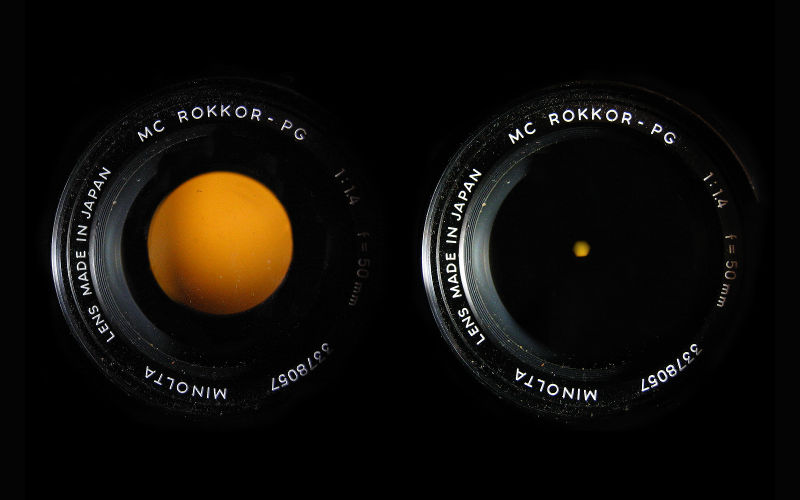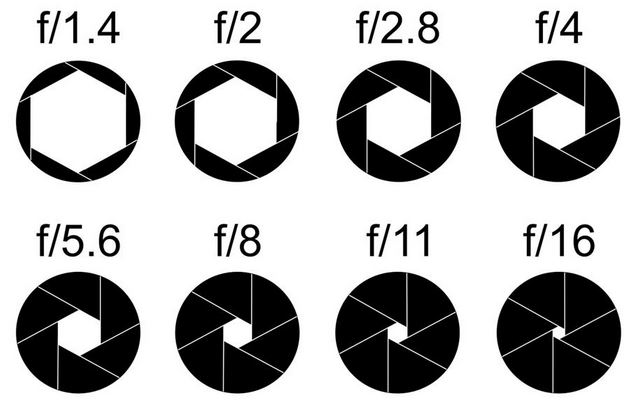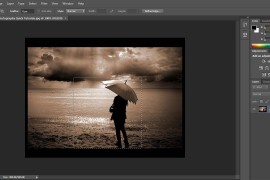“The eye should learn to listen before it looks.”
― Robert Frank

“Aperture”
The first question you encounter when you are introduced to photography is probably What is Aperture? As you can see in the picture above, It is simply a hole that controls the amount of light entering a camera. You can compare it to the pupil of human eyes. The iris muscles around the pupil regulate the opening and depending on the area of the opening the amount of light that enters our eye is regulated. Similarly the Aperture is a variable opening in the lens surrounded by rounded blades, and these aperture blades are opened and closed either mechanically (in older manual lenses with the help of an aperture ring) or electronically with a dial (in modern automatic lenses mounted on a DSLR). In the picture below you can see an aperture mechanism dissembled out of a fairly new lens.

Functions of Aperture :
Aperture and shutter speed are the two most important pillars when it comes to the foundation of photography. After you get out of the automatic mode on your DSLR you just can’t do photography without the basic knowledge about the functions of aperture. Aperture primarily serves these two purposes
- It controls the amount of light entering your camera : To get a balanced and proper exposure you need to adjust the opening of your lens i.e the aperture in such a manner that sufficient light is allowed to reach the sensor (in digital cameras) or the film (in case of a film camera). For example on a sunny day, you shall close the aperture to prevent your image from being whitewashed whereas you will open it completely in the night to well expose. So next time if you find your image either too bright or too dark you will know that you might need to adjust your aperture.
- It controls the Depth of field : Since I will be explaining the concept of “depth of field” later on so I will just give you a small idea here. Depth of field is basically the area that is in focus. You might have seen those picture where the background is completely blurred and the subject in foreground is sharp and in focus. Where as you might also have seen some landscapes where from the mountains in background to the trees in foreground are all clearly visible. In the former it is because of small depth of field and in latter you have more depth of field.
For now just remember –
- Wide Open Aperture : Less depth of field (Less objects in focus. Example: In Portraits & Macros Shots)
- Small Aperture : More depth of field (more object in focus. Example: In Landscapes)
Measurement of Aperture :
Aperture is measured in f-stops. It is denoted as f/number. The number varies depending on the size of the opening.
- The bigger the number (Example: f/16 or f/32) the smaller the opening.
- Where as smaller the number (Example: f/1.4 or f/2.8) the wider the opening.
Although there is a complex mathematical formulae to calculate the aperture as well as to explain more about the relation between these numbers and the light passing through. But for now you don’t need to go in that much detail. Let’s save it for a future tutorial. I have provided a chart below to give you an idea for the relation between f-stops and opening of the aperture blades.

This is all for now. I believe I have answered the most prominent beginner’s question – “What is Aperture ?” in a satisfactory manner. We will be discussing more about this whole concept and it’s impact on our photographs in future articles. So stay tuned and keep visiting PixeLarge.com.
What do you think about this incredible photography tutorial ? Let me know in the comments below.
I recommend you to visit and like my Facebook Page – “Photography Tutorials” , dedicated to the concept of easy learning of the Professional Photography Techniques on your social media platform. You can also like the Official Facebook Representation of “Pixelarge” to stay updated for all the latest articles and tutorials.




Kaamilah
Hi
As a ex photography student who failed to complete my studies due to finance.. It has always remained a passion of mine. I find this torial very informative. Even for recap purposes.. ?
Thank.either you are very good at explaining things because I didn’t have to read it twice to understand … or maybe I just forgot how smart I really am lol
Regards
Kaamilah
PixeLarge
glad to help you..